MSI P35 Neo2-FR: Platinum performance for under $100
by Gary Key on December 5, 2007 11:00 PM EST- Posted in
- Motherboards
MSI P35 Neo2-FR: Board Layout and Features
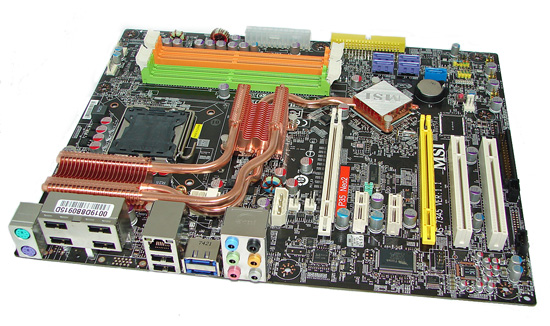 |
MSI devised a new heatpipe system for this series of boards to replace the rollercoaster version on the Platinum boards. Frankly, we certainly think it looks better and cooling performance remains roughly equal. The color scheme is awkward, with various neon colors sitting atop an otherwise elegant black PCB, but appearance probably isn't at the top of the list of important considerations when discussing sub-$100 motherboards. The board was a snap to install in our Antec P180 and Cooler Master 830 cases with most connections easily reached. The Neo2-FR board features a high quality four-phase voltage regulator system that provided excellent stability throughout testing. The board also utilizes Conductive Polymer Aluminum Solid Capacitors.
The MSI P35 Neo2-FR comes with six fan headers (1 x 4-pin, 5 x 3-pin) that provide an excellent balance of cooling options. However, there are limited control options in both the BIOS and MSI's Dual Core Center program. The BIOS controls are limited to percentage based fan speed controls for the CPU and Northbridge fan headers. The Dual Core Center allows changes that are more extensive but are still percentage based. The DCC also allows fan speed monitoring for two system fan headers. This is one of the biggest weaknesses of the board. We wish all manufacturers would design a decent set of applications that match or exceed abit's µGuru technology. Otherwise, we are going to continue to deduct points from manufacturers in this area.
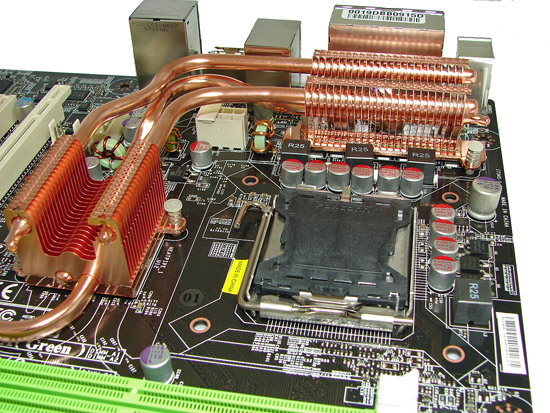 |
Around the CPU socket, we find an ample amount of room for the majority of cooling solutions. We utilized the stock heatsink/fan in our base testing and it worked fine. We also installed several aftermarket Socket-775 cooling solutions such as the Tuniq 120 and Thermalright Ultra-120 eXtreme during our overclocking tests without a problem. However, based upon our initial overclocking tests, if you use a vertical mounted fan with an air cooler (i.e. Tuniq 120) or water-cooling then additional air-cooling will be required on the MCH and PWM areas. In other words, the heatpipe system requires additional fan cooling or the use of a downward blowing CPU HSF fan.
The 8-pin ATX power connector is located in between the heatpipe system. It was easy to our install our power cable but difficult to remove. MSI does include an adapter but we preferred not to use it. We removed the heatpipe system easily to test water-cooling on the MCH/ICH chipsets.

The DIMM module slots' color coordination is not correct for dual channel setup based upon the premise of installing DIMMs in the same colored slots for dual-channel operation. MSI continues to use this coordination scheme, for reasons unknown. The green slots are Channel A and the orange slots are Channel B, and dual-channel requires installing one or two DIMMs into each channel. Installing memory modules with a full size video card placed in the first PCI Express x16 slot was not a problem. The 24-pin ATX power connector is located on the edge of the board along with the number three system fan header.
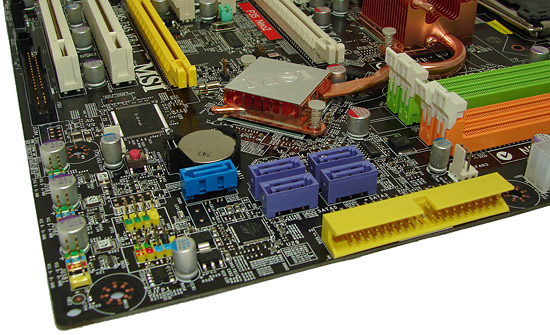
We found the positioning of the four purple ICH9R SATA ports to be excellent when utilizing the expansion slots, as they are out of the way of longer cards. However, a full-size card located in the second PCI Express x16 (physical) slot will partially block the light-blue SATA slot. The passively cooled ICH9R chipset remained cool to the touch throughout testing. The IDE connector is located below the SATA ports.
MSI added a red clear CMOS button on the board. Of interest, MSI has a series of LED lights in the same location that take the place of the typical POST Code Debug display. The user can decipher the error sequences displayed by the led panel by looking in the manual, though with four lights they are limited to sixteen codes. Personally, we prefer the standard debug displays, but for the price we can't really complain.
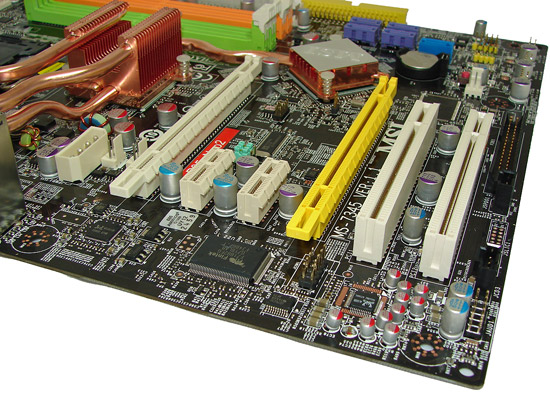
The board comes with two physical PCI Express x16 connectors (1 x16, 1 x4 electrical), two PCI Express x1 connectors, and two PCI 2.3 connectors. Dual-slot graphics cards will block the first PCI Express and PCI slots. A 4-pin 12V Molex connector is to the left of the first PCI Express x16 slot for CrossFire operation; MSI also recommends using the additional power connection if all of the expansion slots are populated. MSI includes a set of jumpers that allows the user to set the FSB rates at 200, 266, and 333.
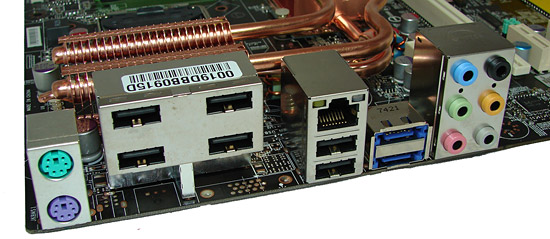
The rear panel contains the standard PS/2 mouse and keyboard ports. The panel also includes an RJ-45 LAN port with activity indicator lights, six USB ports, and two eSATA ports. The audio panel consists of six ports that support 2, 4, 6, and 8-channel audio connections for the Realtek ALC888T HD codec.










35 Comments
View All Comments
krunt - Saturday, January 12, 2008 - link
so when can we expect the shoot out between the "cheap" boards? it has been two months since it was said to be here shortly.nefar - Sunday, December 23, 2007 - link
It drives me crazy when a site claims a price and then it turns out it's with a "rebate". Unless I can go buy the item under $100.00 it's not under $100.00 and it should not be shown as such.thebittersea - Sunday, December 9, 2007 - link
This is a great article with a lot of AnandTech caliber content. However, I have one problem with the fluff that plagues your write up. I'm not sure if you have to reach a certain pages to get the amount of ads to keep this place going, but I find that informations are being repeated over and over again. The conclusion (which I always read first), can definitely be summarized in less than two paragraphs.I love your site!
nermanater - Saturday, December 8, 2007 - link
Just as a side note, there is no such thing as CAL P...there is cevo-p but if you were in that league you wouldn't make that mistake. Sound is extremely important to serious gamers and onboard just doesn't cut it sometimes.rallyhard - Friday, December 7, 2007 - link
On page five:"The problem is that once we started to raise the FSB over 445 with the Q6600 or QX6850 processors, the board automatically (drastically) reduced chipset timings and memory sub-timings"
Shouldn't that be an increase in timings? A reduction would be a good thing, right?
JarredWalton - Friday, December 7, 2007 - link
"reduced" as in "changed in a bad way that results in reduced performance" is the idea. Yes, the timings/sub-timings are probably getting higher. I think it also changes the FSB strap (Gary can confirm). So basically, you're better off with a lower FSB/higher multiplier, which gives improved performance.takumsawsherman - Thursday, December 6, 2007 - link
This seems to have very few ports on it, not to mention zero firewire. In bulk, adding firewire to a board can't be *that* expensive.just4U - Thursday, December 6, 2007 - link
I am glad you folks here at Anandtech did a review on this board. I've set up a few computers now based around it and I was so impressed I accually want one for myself. When I recommend it to others it's like being in a very quiet forest as no one really knows much about it.I accually liked the little led display they have to. Looks good in a windowed case and is very subtle.
Anywhoo Good review!
ultimatex - Thursday, December 6, 2007 - link
Toms and Hardocp have done reviews of this board and its always scores higher or the same as those $200.00 boards.I did tons of research comparing it to the Asus and Gygabyte ones that cost the same and went with this one because off all the benchmarks ive seen. Plus it looks better than any board at $120.00
Anyone know if theres any way to soder a optical outlet on this board and if it will work.
j@cko - Thursday, December 6, 2007 - link
The title "performance for under $100" is misleading; because without the rebate, this board is >$100 and the rebate is time limited. Unless MSI is due to a price cut soon.